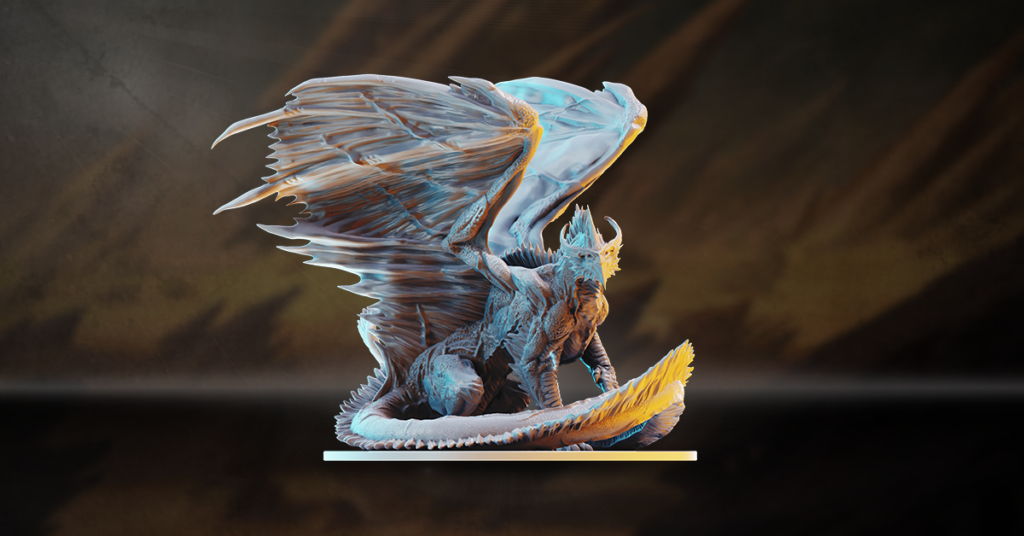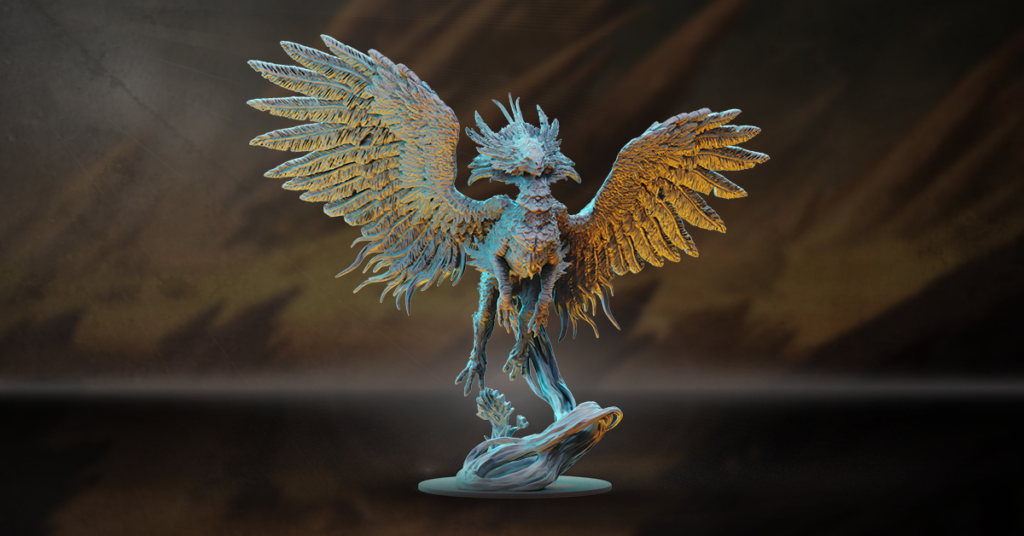If there’s one thing to get us all very excited here at Draco Studios, it’s dragons. So in this blog post, we want to share with you the origins of one of our fantastic dragon minis, Vexzilon Izerxzes. And who better to answer the question of ‘how do you start drawing a dragon?’ than Draco’s very own art director, Tom Babbey?
In a new video, Tom recorded the process of how Vexzilon Izerxzes came into being, and we’ve taken the key points from that video and created this article so you can see step-by-step just how this dragon was created.
This is the first in a series of stories where we show the creation of one of our miniatures, from initial concept through to tabletop.
Start With Real-World Inspiration
When you take a look at the range of dragons that Draco Studios has made, you’ll see that they are unique and individual from one another. There are some that have the look of a classic fantasy dragon, and others that feel more alien in their appearance.
From the magnificent Fulgen brood, boasting a timeless regal fantasy dragon form that captivates the imagination; to the awe-inspiring Coatl brood, drawing inspiration from the captivating Latin-American legends of colossal feathered serpents.
And ideas for these designs come from all sorts of places, one of them being real life. Or at least real life as it once was on Earth.
The dinosaurs and other creatures from our ancient past are an incredible source of inspiration for fantasy creators. And, as Tom tells us, the design for Vexzilon Izerxzes evolved from a cross between a pterosaur, an apatosaurus, and a trilobite.
Oh, and a rather large spider wasp…
Having those initial visual clues from nature allows the design to flow from the imagination straight onto the page. And so Tom began to sketch. Or, to use his own words “this is where I begin with all of my designs, I throw down some scribbles.”
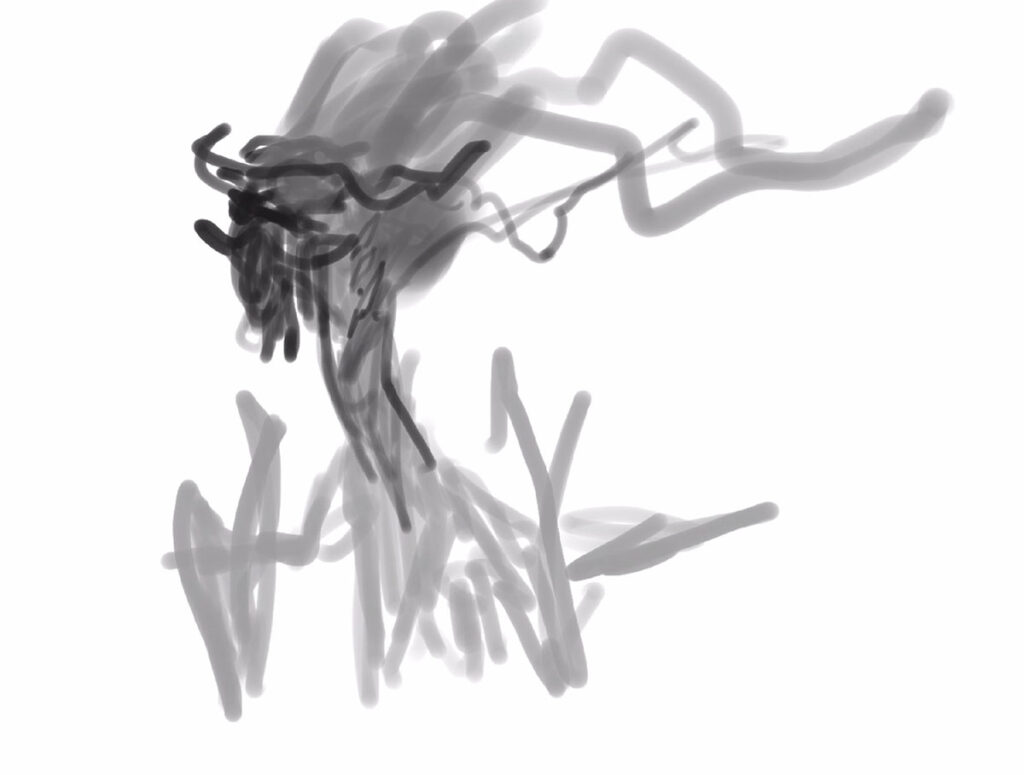
Without the visual inspiration from the dinosaur images, these scribbles may well seem to be just that. But if we look at the pterosaur image, and then compare that with Tom’s initial sketch, we can already see the very vague outline of something taking shape. And as those ‘scribbles’ grow and evolve, that shape gradually begins to become more defined.
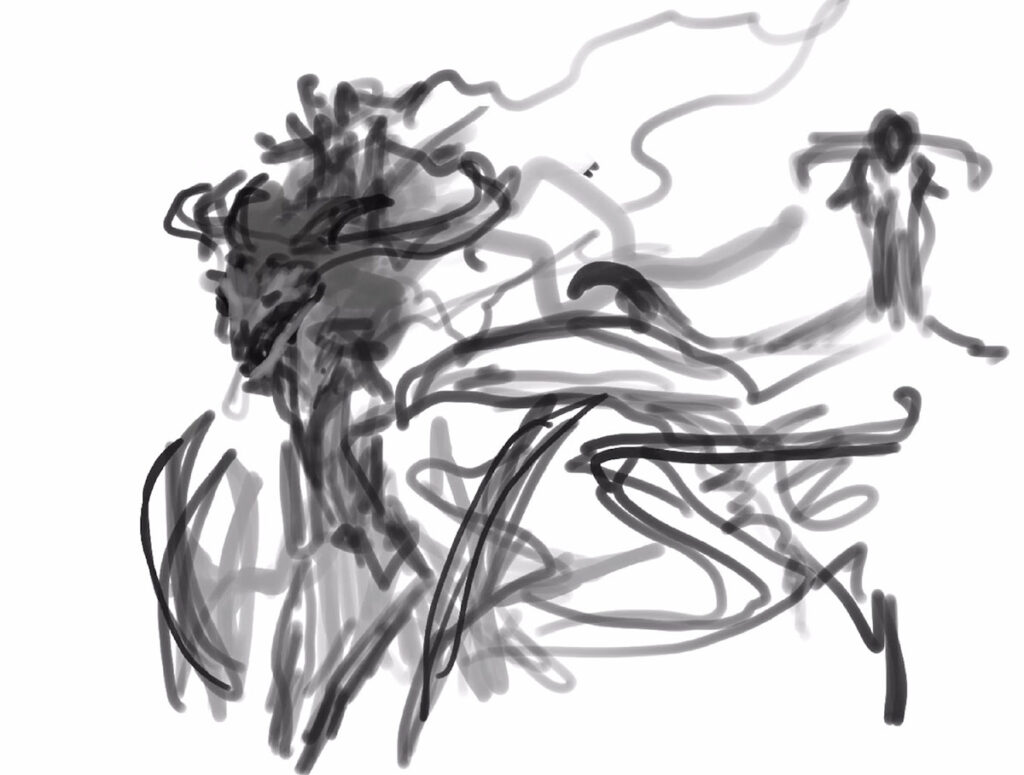
Alongside the pterosaur, we can see the apatosaurus also starts to come through, with the long tail and the thick neck.
The pterosaur arm structure starts to get stronger, and the trilobite aspect starts to get fed into the sketches with the inclusion of the little flanges sticking out on the neck.
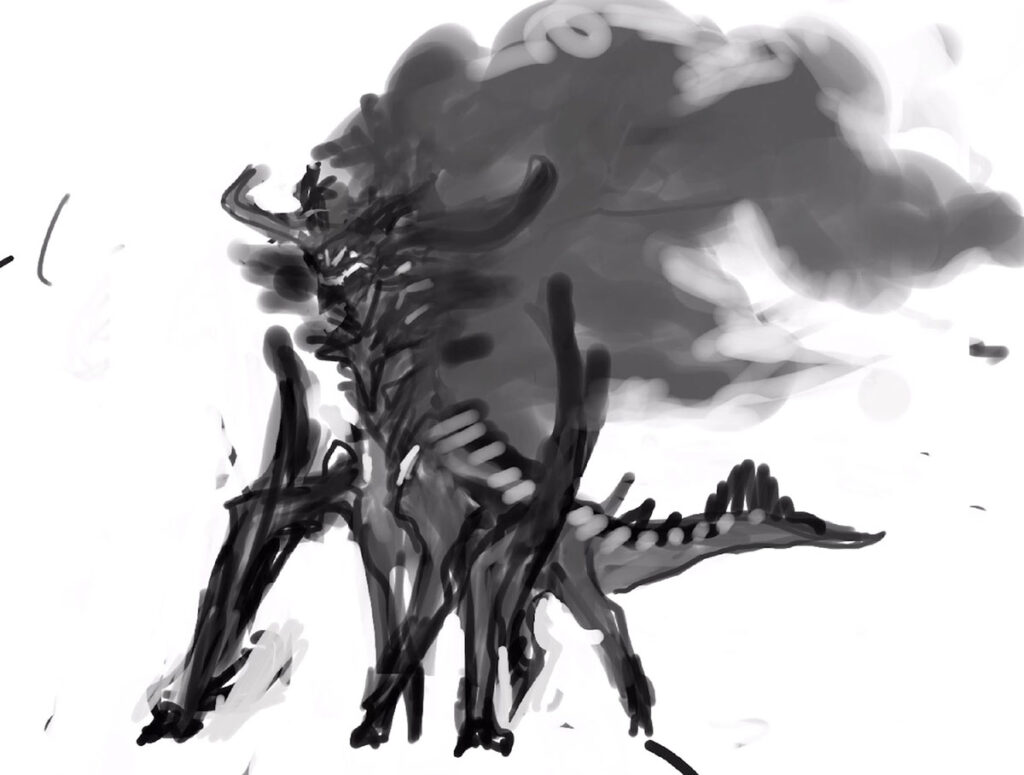
Tom believes that the most difficult hurdle when designing a dragon is finding an instantly recognizable and interesting form. And as the sketches really start to take shape, it’s clear what that is now for Vexzilon Izerxzes.
“It looks like this is kind of scribbly kind of sketchy. But this is where all the heavy lifting goes. This is where all the thought process is from this point on. It’s a matter of refining.”
Tom Babbey
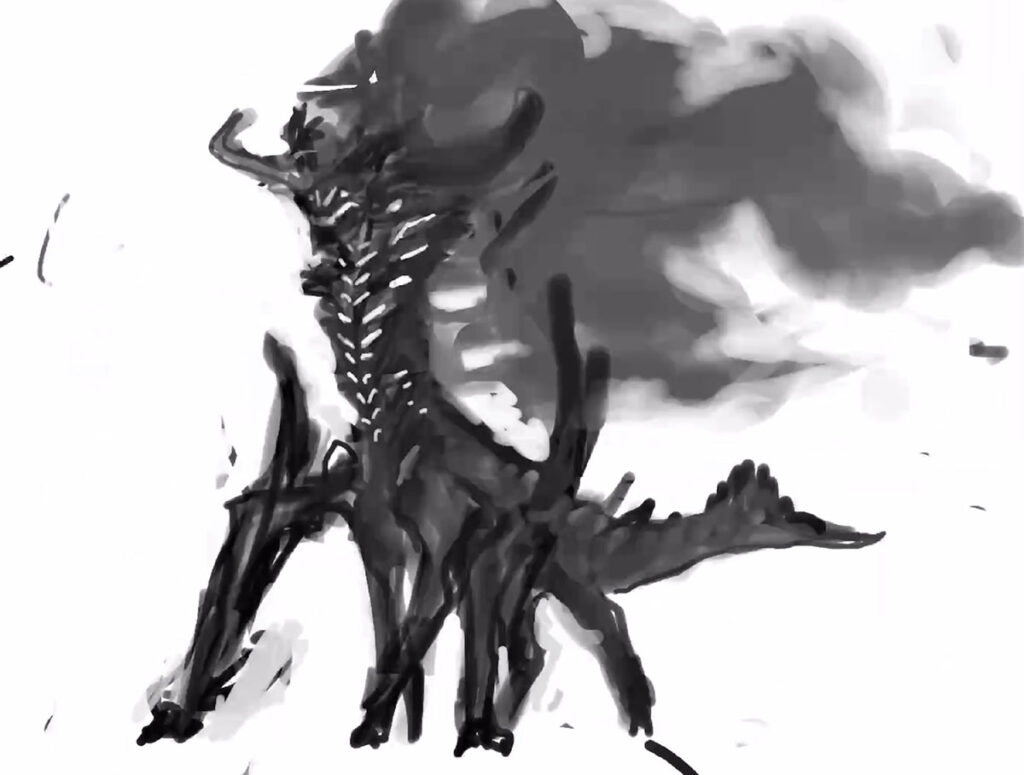
We begin now to see more of the trilobite influence, as Tom starts to add scales and texture to the skin.

And the repeating structure of the underbelly gives a carapace-like feel, similar to the armored look of the trilobite.
Adding Color
Tom once again draws from nature with the color scheme for this dragon. Although his inspiration here is from a much smaller source…
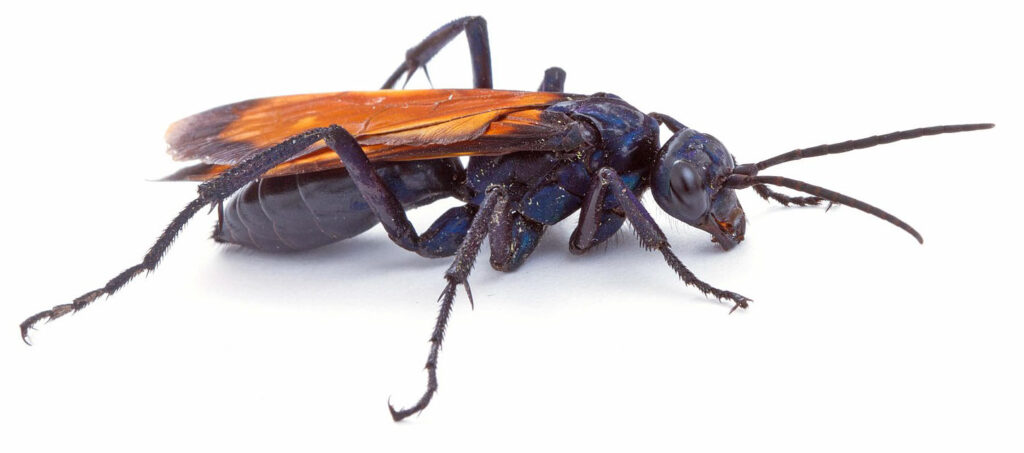
The Tarantula Hawk spider wasp is native to San Diego County, and the contrasting colors of blue and orange add a striking and distinctive look to the artwork.

The metallic blues and burnt oranges really seem to fit this dragon well, creating something really interesting. Although the inspirational sources come from several different species, because it’s all drawn from nature the final look of this highly unique dragon feels both cohesive and believable.
So, there we have it. From simple scribbles to full-blown artwork. Check out the full video below.
Next, we’ll show you how Dani used this art from Tom to create the 3D sculpt for the new Izerxzes dragon…


